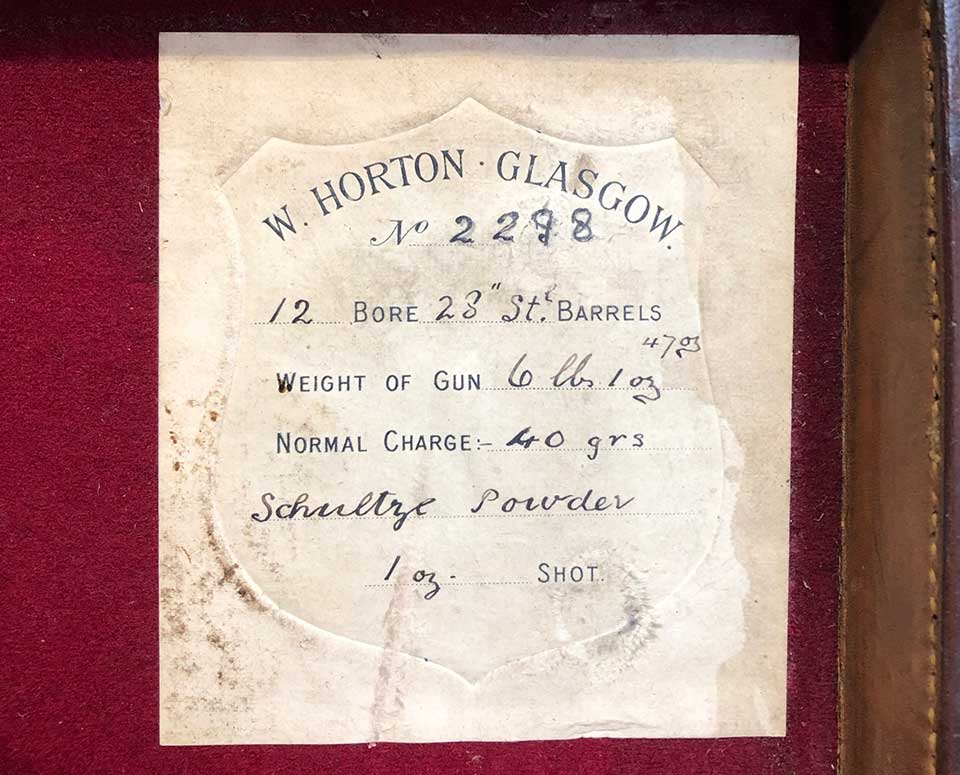Today, manufacturers appear to be selling guns with 3” chambers in an effort to make them ‘idiot proof’. The idea is that if the gun can handle any available cartridge, it indemnifies the maker from legal action, when an owner puts the wrong load in the chamber and claims it was not his fault.
It may, however, serve to encourage shooters to put pointlessly heavy charges through their average weight guns. This is fine, as far as it goes with new over & unders but if you shoot vintage guns, it is interesting to examine what the makers were working towards in terms of pressure tolerances, expectations of chamber, cartridge, choke and gun. To understand our guns, we need to understand what the makers knew and what they intended.
English guns will have nominal chamberings of 2 1/2”, (note that the actual chamber length may be 2 5/8” or 2 7/8”), 2 3/4” or 3”. The last two normally reserve for wild-fowling guns and guns for live pigeon trap shooting.
The 3” chamber was developed for use in the live pigeon trap shooting competition so popular in Victorian and Edwardian days. At the time, a standard cartridge was closed with an over-shot card, rather than a modern crimp closure.
The standard length chamber was 2 9/16”. The standard game load was 3 drams of powder propelling 1 1/8 oz of shot. A pigeon gun would typically have a 2 3/4” chamber and a cartridge loaded with 47 grains of Schultze powder and 1 1/4 oz of shot.
Guns chambered for 3” cartridges offered the opportunity to load more powder, though this was reported by Greener to ruin the pattern. The other option was to load a bigger over-powder wad, providing more cushioning to the shot. This, rather than increased power, was the chief advantage of the longer case.
In terms of performance, standard game guns of the period around 1900 were built to deliver the following maximum patterns at forty yards, with Full Choke:

Using less tightly choked barrels would deliver these patterns at closer ranges.
For a full choke pigeon gun, the desire was to put 250 pellets in the ‘killing circle’ at 40 yards. Greener, experimenting with Schultze and ‘E.C’ smokeless powders in the early 20th century claimed 47 grains of powder and 1 1/4 oz of No.6 shot could deliver 270 pellets in the 30” circle at forty yards. He recommended a pigeon gun should weigh 7 1/2 lbs, ideally, and not more than 8lbs.
The pressures being expected from the standard 12-bore load at the time were 2 1/2 -3 tons per square inch for a game gun. A 2 3/4” chambered gun was proof tested to 3 1/4 tons per square inch and a 3” chamber expected to handle up to 4 tons per square inch.
It should, perhaps, be noted here that smaller bore cartridges produce more pressure than the same load in a larger bore, so loading a long 20-bore cartridge with 1 oz of shot and the same powder load to propel it as in, for example, an Eley Impax 12-bore cartridge, the 20-bore breech will have to handle a higher pressure. This may induce more felt recoil, which is exacerbated by a lighter gun. The extra pressure and longer shot column also create more deformed pellets, which may become 'flyers' and spread wider, faster.
A 3” cartridge was also used in 12-bore wild-fowling guns to handle up to 4 drams of powder and 1 1/2 oz of No.4 or larger shot for long range work. Guns proof tested with 3” chambers were stamped with ‘LC’ in a diamond to denote the long chamber. These guns may weigh 7 1/2 lbs or 8 lbs.
After WW2 we see some British makers using 2 3/4” chambers as standard, in mid-weight guns, reflecting the greater availability of this type of commercially-loaded ammunition. The Webley 700 model, for example, was proofed for 2 3/4” from the 1960s onwards. However, most British guns will perform best with loads close to their original intent. For a standard weight, pre-war British game gun, that means 1 1/6 oz of No.6 shot, patterning at 40 yards.
Published by Vintage Guns Ltd on (modified )



